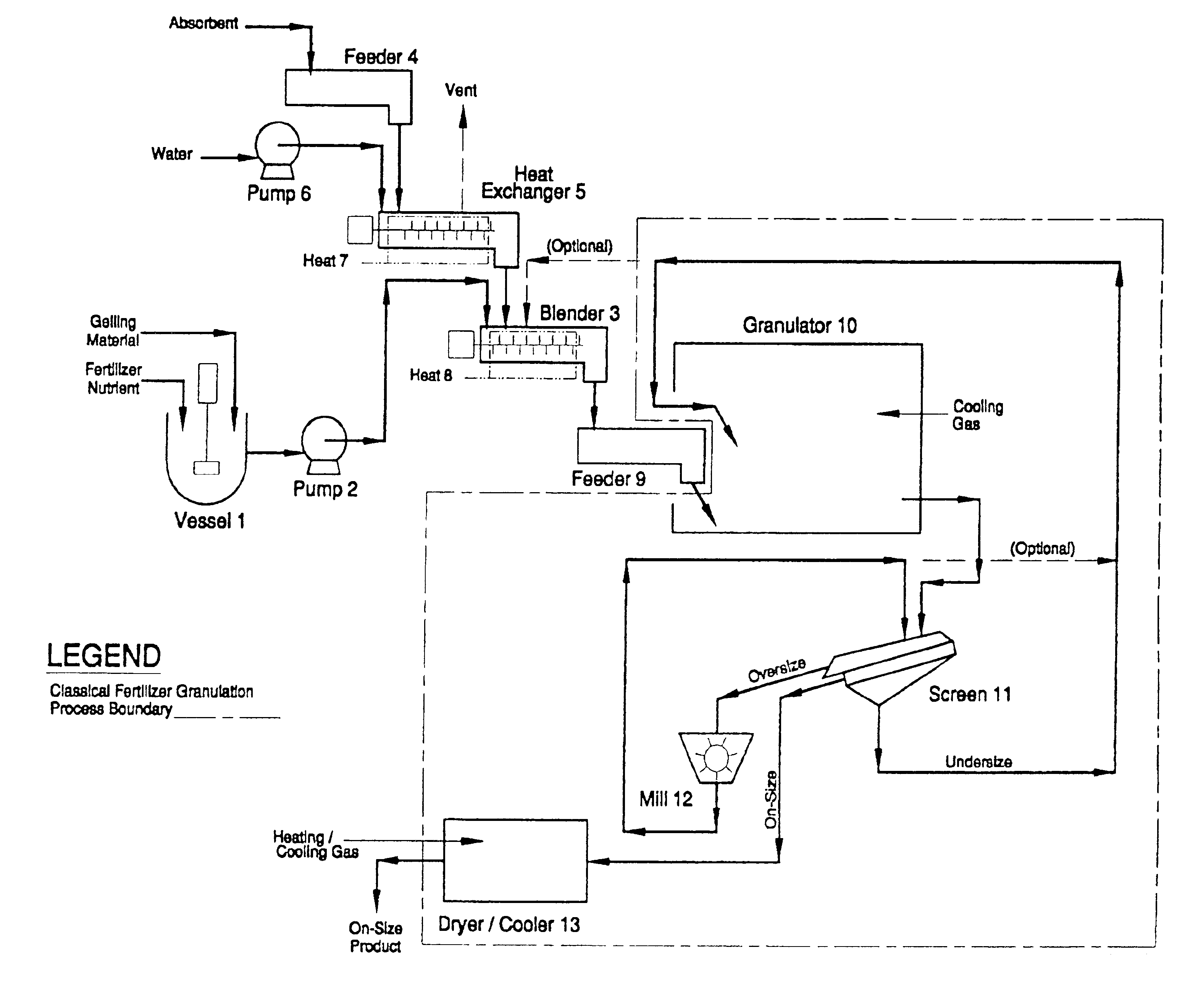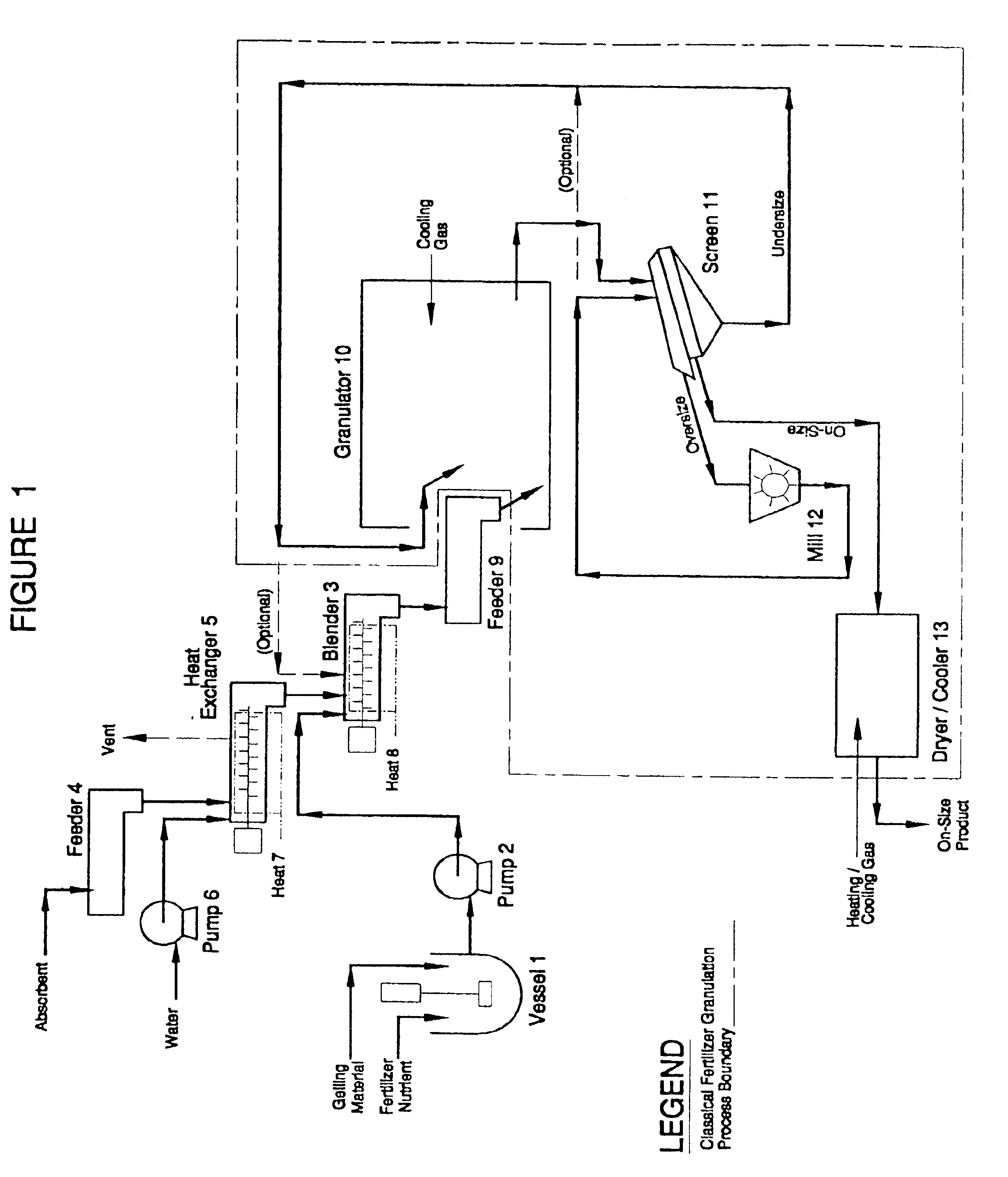Controlled release agricultural products and processes for making same
a technology of agricultural products and agricultural products, applied in the field of controlled release agricultural products, can solve the problems of high-priced extended release products in general not tailored, excessive consumption patterns of consumers for extensive use in agriculture, and limited existing products
- Summary
- Abstract
- Description
- Claims
- Application Information
AI Technical Summary
Benefits of technology
Problems solved by technology
Method used
Image
Examples
example 1
[0093]Samples of controlled release urea were granulated using an 85% urea solution, with and without corn starch equal to 1% of the final product, and pre-heated perlite 3-S. The urea and corn starch were combined in a laboratory beaker. A laboratory scale homogenizer was used to evenly disperse the corn starch in the urea solution. In separate tests, a sufficient amount of perlite, both pre-heated to 300° F. and un-heated, was added to the urea / corn starch mixture to obtain almost complete absorption of the mixture. The mixture was removed from the beaker and allowed to solidify. Once the mixture had solidified and cooled, it was crumbled using a laboratory blender on the chop setting, and then screened to obtain −6+7 Tyler mesh (3.4 mm to 2.8 mm in diameter) fertilizer granules. These granules were then dried in a laboratory fluid-bed. The resulting materials were evaluated by placing 1 gm of sample in a test tube with 6 grams of water held at 75° F. for 1, 2, and 3 days, at whic...
example 2
[0094]A pilot plant was set-up where urea was melted by a steam tube melter then blended with water to make an 85% solution and continuously fed at 109 lb / hr to a mix tank equipped with a homogenizer where corn starch powder was added at the rate of 1 lb / hr. The urea solution and the mix tank were maintained at a temperature of 210° F. Expanded 3-S perlite was continuously fed to a fluid-bed pre-heater at 7 lb / hr where it was heated with air until it was 320° F. to 327° F. (No water was applied to the perlite before hand and no steam was used to exfoliate it.) The perlite and the urea / corn starch mixture were then fed to a pugmill where most of the urea / corn starch mixture was absorbed while being held at a temperature of 196-197° F. The resulting slurry of perlite containing urea and corn starch plus excess urea and corn starch mixture was fed to a second pugmill. Oversize granules produced during the pilot plant operation were milled utilizing a Jacobson knife-bladed hammermill to...
example 3
[0096]Eighteen (18) grams of expanded 3-S perlite was placed in a laboratory vessel having an agitator and small vent. 20 ml of water were added to the vessel and mixed with the perlite, and it was heated so that it steamed for 1 hour at 220° F. 350 grams of a mixture of 85% urea solution with 1% of corn starch homogenized with it was added to the steaming perlite and mixed well. The mixture was poured onto a plastic surface to harden and then crumbled in a lab blender. The crumbled material was screened to −6+10 Tyler mesh (3.4 mm to 1.7 mm in diameter) and dried in a lab fluid-bed. The resulting material had a bulk density of 35 lb / ft3. The material was then placed in a rotating drum and rounded by blowing hot air on it at 240° F. The bulk density of the resulting material was 38 lb / ft3.
PUM
 Login to View More
Login to View More Abstract
Description
Claims
Application Information
 Login to View More
Login to View More - R&D
- Intellectual Property
- Life Sciences
- Materials
- Tech Scout
- Unparalleled Data Quality
- Higher Quality Content
- 60% Fewer Hallucinations
Browse by: Latest US Patents, China's latest patents, Technical Efficacy Thesaurus, Application Domain, Technology Topic, Popular Technical Reports.
© 2025 PatSnap. All rights reserved.Legal|Privacy policy|Modern Slavery Act Transparency Statement|Sitemap|About US| Contact US: help@patsnap.com



